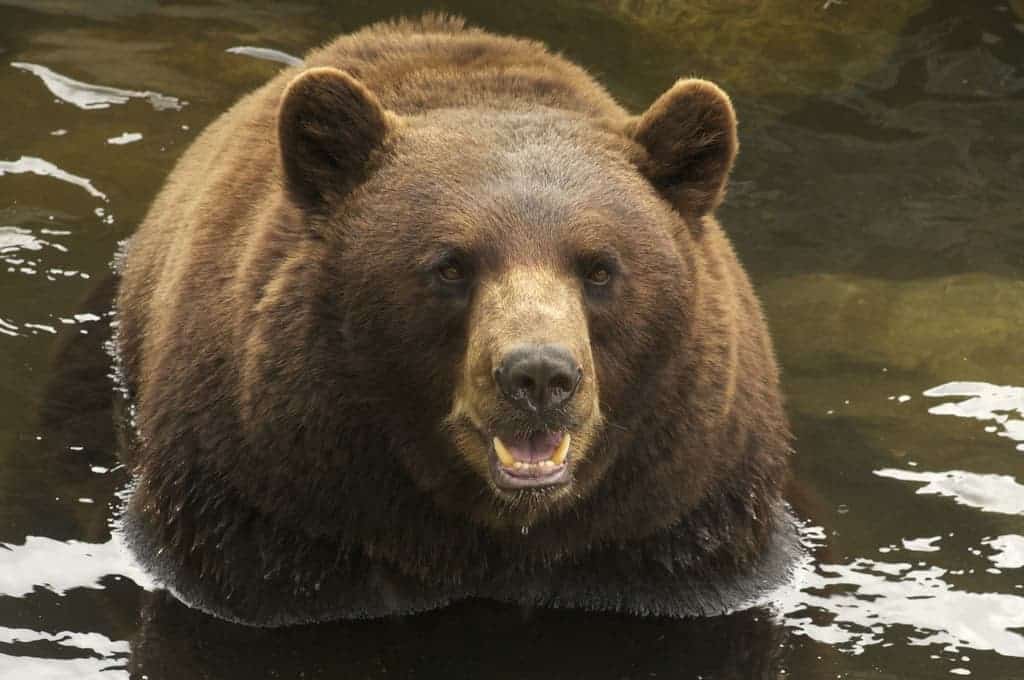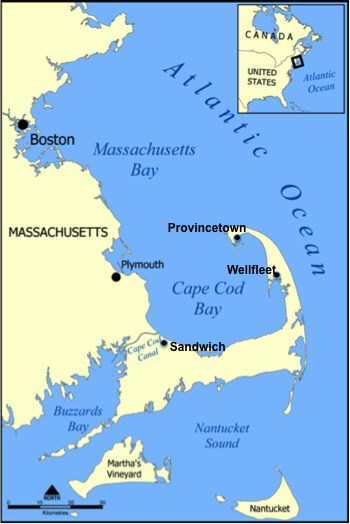
A young male black bear (Ursus americanus) that made a surprise appearance on Cape Cod, Massachusetts, has been returned to the mainland by state wildlife officials.
The isolated peninsula is a popular vacation spot but not for bears. The 180-pound bruin became a minor celebrity after completing a refreshing swim across the 500-foot-wide Cape Cod Canal during the recent Memorial Day holiday.
Once on dry land again the hairy accidental tourist traveled east, from Sandwich to Provincetown and then backtracked to Wellfleet, covering over 60 miles during the two week visit. Residents-turned-bear-paparazzi documented the animal’s travels, including trips to a golf course and cranberry bog, with photos and videos.
Massachusetts’ bear population, estimated at about 3,000 in 2005, is on the rise and expanding from the western into central, eastern and southeastern parts of the state.
The species is highly adaptable and, therefore, becoming a more common feature of urban and suburban habitats across the U.S. Attractants include bird feeders, garbage cans and dumpsters, compost piles, pet and livestock food, outdoor grills, fruit trees, and beehives. News stories posted over the past week alone include reports of urban bears in Florida, Missouri, New Hampshire, New Jersey, and New York.
Once the Cape’s sightseeing bear was spotted in downtown Provincetown with smartphone- and camera-toting members of the pubic in hot pursuit, wildlife officials became concerned about the safety of both the human and non-human animals. The state’s Environmental Police and Division of Fisheries and Wildlife (MassWildlife) both took part in the relocation effort.
A tranquilizer dart was used to stun the animal, which was then carefully removed on a stretcher from the underbrush where it had taken cover. Biologists and police monitored the bear post-release and say it’s in good condition and doing well.
Prior to release in an undisclosed location in central Massachusetts, the animal was given an ear tag so it can be recognized in the future—a souvenir, if you will.
Want to learn more? Be smarter than the average bear… amble on over to Next-Door Nature.
Kieran Lindsey
Kieran Lindsey loves looking for wild things in all the wrong places... so she became an urban biologist. Her quest to entice others to share this passion led to flirtations with (gasp!) the media—as a columnist for the Houston Chronicle; as host of KUNM-FM’s Wild Things; as producer of an Emmy® winning wildlife documentary; and at her Next-Door Nature blog. Kieran has way too much fun as official Animal-Vehicle Biologist for NPR's Car Talk, and she isn’t ashamed to admit it.

Leave a Reply